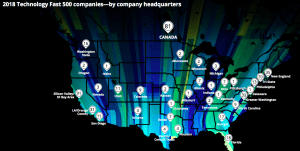
$2.5 Million Grant Awarded to BioHealth Capital Region Research Collaborative to Fight Deadly Virus
Scientists from across the BioHealth Capital Region will collaborate on a five-year, $2.5 million grant from the Department of Defense to fight the Venezuelan equine encephalitis virus (VEEV), a South American-borne disease that can cause long-term neurological problems and even death. George Mason University researcher, Kylene Kehn-Hall, PhD, lead the efforts to win the sizable grant from Defense Threat Reduction Agency (DTRA)
Kehn-Hall, an associate professor in Mason’s School of Systems Biology within the National Center for Biodefense and Infectious Diseases, is collaborating with scientists, Jonathan Dinman, Ph.D, from the University of Maryland, Department of Cell Biology and Molecular Genetics, and Jonathan Jacobs, PhD Director of Global Product Management, Genomic Analysis at QIAGEN, a worldwide provider of molecular technologies and genomics analysis solutions.
The team of researchers have been collaborators for 4+ years and were awarded a previous DTRA grant which served to provide a lot of the preliminary data that was used to advance their research and win this new award. With a new five year grant, the team the hopes to identify genetic factors in the virus that can be therapeutically targeted to help prevent the disease. of developing remedies to the Venezuelan equine encephalitis virus (VEEV). The disease, which attacks the neurons of the brain, can be fatal, but often causes brain swelling that can leave those infected with long-term neurological issues such as seizures and personality disorders.
“The virus has no cure and can be easily aerosolized and weaponized,” said Kehn-Hall. “I would like to identify specific targets for the therapeutic countermeasures and show in a mouse model that we can prevent this disease.”
The collaborators originally met at a DITRA conference, which was the impetus of their first grant together. “Being local has really helped because we can have in-person meetings, which we intend to do monthly for this grant,” said Kehn-Hall. “Seeing people face to face really helps push things along and achieve a more productive collaboration that would be much harder if we were always virtual.”
Kehn-Hall and her team hope to lay the foundation for an eventual therapeutic treatment by identifying transcriptomic (RNA-based) and proteomic (protein-based) events that help the virus attack and kill brain neurons. “When brain cells die, bad things happen,” Dinman said. “Our goal is to come up with a remedy that won’t stop the virus, but one that will stop this pathology.”
Kehn-Hall and her team are the experts in the virus and will run a vaccine lab, doing all of the containment work in the BSL3 biomedical research lab in the National Center for Biodefense and Infectious Disease at George Mason. Jacobs is a bioinformatics and genomics sequence analysis expert who will be doing high-level protein and RNA pathway analysis using the Qiagen software. Dr Dinman is an RNA, structural biologist who will run the confirmation assays to confirm targets. His lab will also perform the CRISPR/CAS work to develop the knockout cells, which are the cells that lack the certain factors that they are studying, to see how important they are to preventing the virus. Also assisting on the grant will be Dr. Liotta, Co-Director and Co-Founder of the Center for Applied Proteomics and Molecular Medicine (CAPMM) at George Mason University.
VEEV, which was first identified in Venezuela, often manifests itself in the form of flu-like symptoms such as high fevers, headaches, encephalitis and even death. A large-scale outbreak of the disease occurred in Columbia in September 1995, resulting in more than 14,000 human cases and 26 deaths, according to media reports. The threat of VEEV has recently become more pronounced as the mosquitoes who carry the virus extend their reach, driven primarily by increases in globalization and rising temperatures from global climate change. Jacobs and his colleagues recently detected and sequenced a sub-type of VEEV in the Florida Everglades, but it was fortunately found in mosquitoes that do not typically feed on humans.
“It’s important from a public health standpoint,” Kehn-Hall said. “There are still people who get this virus on an annual basis.”
John Hollis, Communications Officer, George Mason University at [email protected] or (w) 703-993-8781
Author:
Chris Frew
- About the Author
- Latest Posts
Over the past 11 years, Chris has grown BioBuzz into a respected brand that is recognized for its community building, networking events and news stories about the local biotech industry. In addition, he runs a Recruiting and Marketing Agency that helps companies attract top talent through a blended model that combines employer branding and marketing services together with a high powered recruiting solution.





